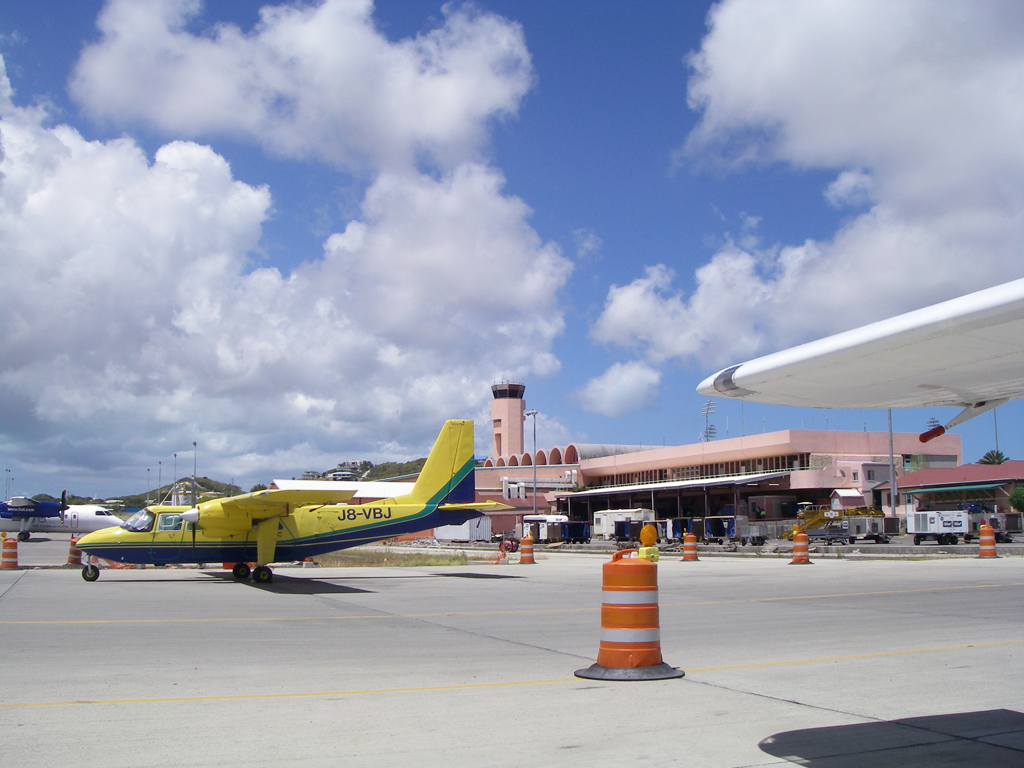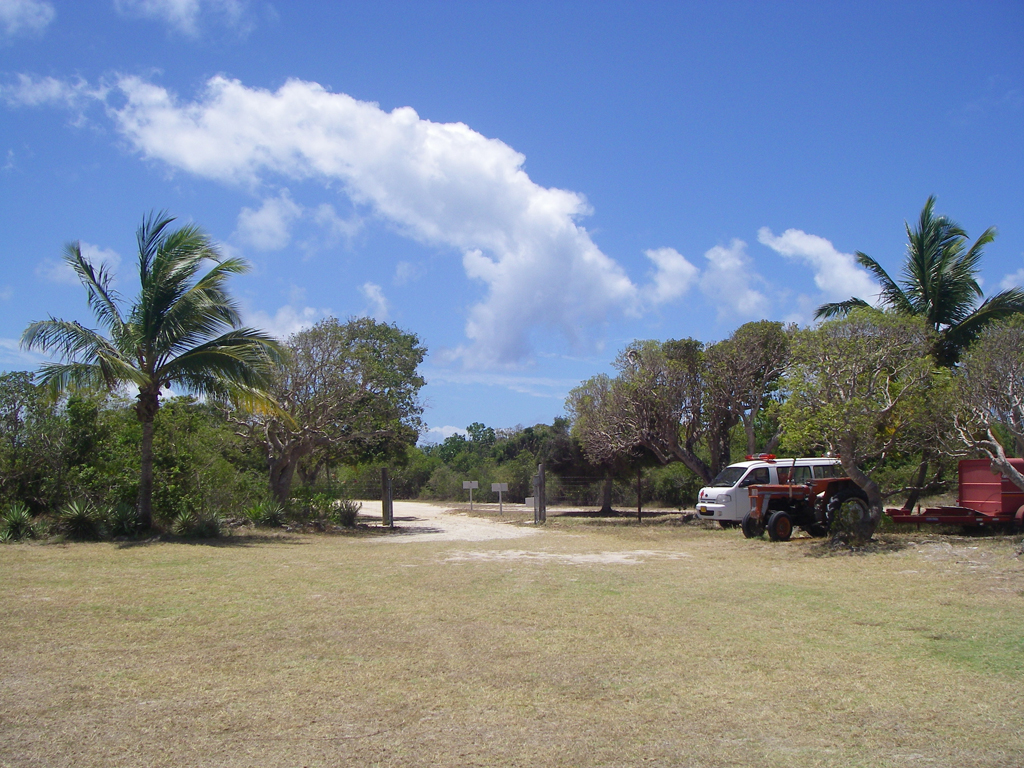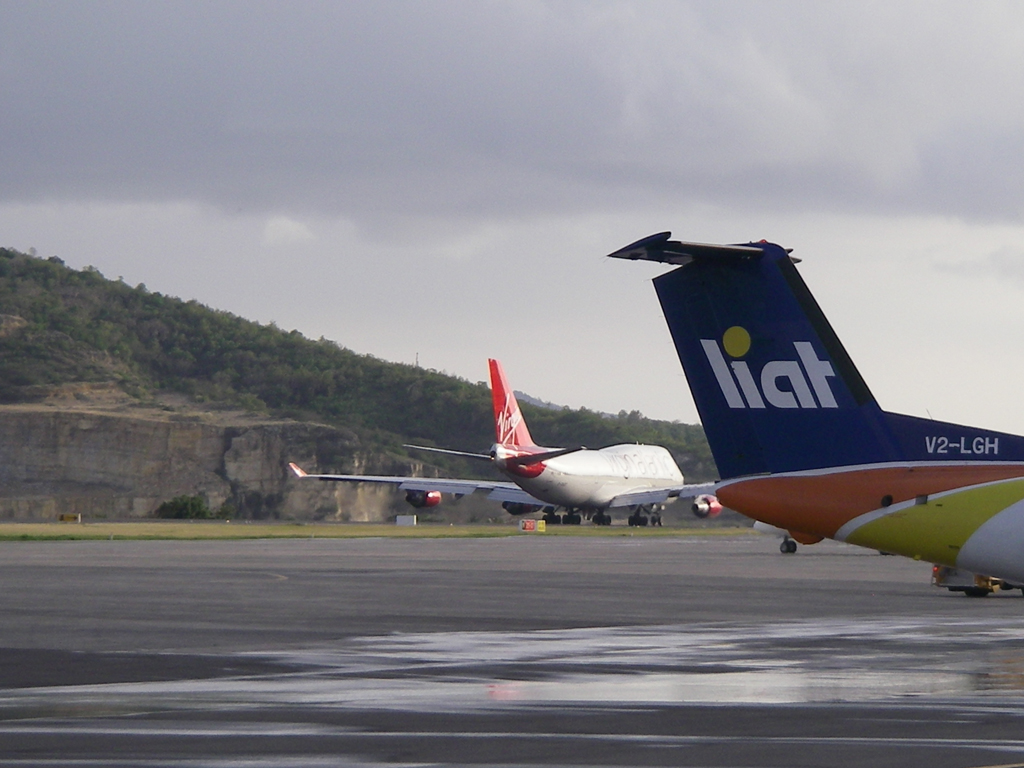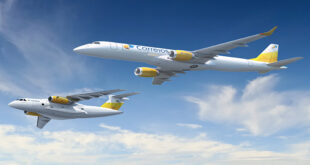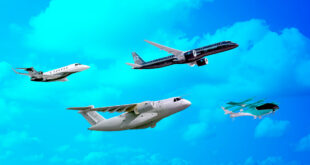The joy of Aviation, soaring the skies, surfing the clouds, yes, that’s fun. Now imagine adding some extra ingredient: Charter flying in … the Caribbean!
Flying the skies of the islands once home to adventurous, famous (and infamous) pirates, is an experience some of us share and enjoy. Flying over the open waters, from island to island, from airport to airport to grass strip, and back to airport.
Our day starts at 6.30 in the morning, when the sun comes out, and we get ready to be at the airport at 7.15, just about 45 minutes before our first flight of the day. Starting point is Antigua’s V.C. Bird International Airport (ANU), of Antigua and Barbuda.
First things first, we check in at the handler’s company, receive the latest weather report, and manifest. As we are ready to make our weight and balance calculations, we start to calculate our fuel load and call in the fuel truck, and do our aircraft’s preflight. The day couldn’t be better any better… until we receive a phone call from dispatch. An additional passenger is coming.
“Oh darn!”, I think. There still are two seats left, but why is this a complication?
This flight is going to the island of Montserrat, a British Overseas Territory. This island suffered a volcano eruption in July of 1995, leaving half of the island covered and destroyed, including its international airport, W.H. Bramble Airport, and forced the island to be accessible only by helicopter or ferry until the new airport opened in 2005, the John A. Osborne Airport (MNI).
The trick is, with its length of 1800 ft / 600m it could be considered a rather medium to short General Aviation airport. With a steep hill on one side, a steep valley on the other, normal crosswinds exceeding 20 knots, and strong, constantly changing sheer winds, there is ‘no room for errors’.
As pilots, we all know that landing is an option and that a go-around is always available, nothing wrong with that. Add to this that we only have enough fuel to get back to our airport of departure plus reserves, and on this island’s airport, given its special characteristics and necessary special training and sign-off, each go-around has to be reported in writing to the airport director together with its reasons, with possible sanctions to the company, and/or retraining of the pilot. Accidents happened before, on any airport, but on this airport it can mean flying against a hill, or against a steep valley wall. Both sides of the airport are “covered”, one with hills and buildings, the other with the Soufriere Hills Volcano, shrouded most of the time with low clouds and mist. Adding to that, on top of the hill are some occupied houses – on a bad climb out day “you can see what they are having for lunch on their plates,” as we used to describe today’s conditions of departure.
It’s no wonder that we fly with less than the airplane is capable of. It is the BN-2 Islander, a flying ”twin-engined box’, but hard working like a truck, and easy to fly, though in these conditions nobody wants to get caught with an aircraft loaded to its maximum capacity.
The company’s policy marks the maximum weight of the aircraft when flown into or out of Montserrat at about two hundred pounds (90 Kg) under its legally permitted weight. Depending on the day, we often remove 300(135 Kg), or even 400 (180 Kg) pounds.
Recalculating the weight and balance of our airplane and comparing it to the weather conditions, I decide to leave some non-time sensitive cargo behind with our handlers in Antigua for the next departing flight to Montserrat, as we are flying a round trip and will be back in 40 minutes. That next flight ANU-MNI shows just two scheduled passengers, one of them being a child.
“Good! Now let’s hurry up!” I say to myself, “The weather is closing in!”
The nice, tropical Caribbean weather has its moments where it changes to a few, but short, heavy rain showers, most of the time coupled with thunderstorms. Being only of a short but strong intensity I wouldn’t mind to postpone a flight.
But, as we all guessed, there are always a few “problems”: One of them being the delay of other aircraft and therefore a delay for take-off slots.
Another problem for us charters is that we are mostly day VFR charters, which means only during the day and under visual conditions. Montserrat airport closes for night operations, which is around 6.30 in the afternoon!
We finally make it, on time, to depart before the weather moves in. After briefing the passengers, calling clearance delivery for engine start and ground control for taxi instructions, we are cleared to taxi to the active runway. For us it means taxiing to the intersection of the taxiway A with the active (and only) runway, as departing from here means we have more than enough space, even if on a full load!
After our non-eventful departure, and established at our cruising altitude of only 2000 ft as requested by ATC, we are enroute to MNI. This is the best time to finish and adjust the time logs, and be a tourist guide as well, if the passengers are non-locals, or just spot a few whales playing in the blue Caribbean waters.
Upon landing at Montserrat, deplaning the passengers, unloading the cargo, going through our paperwork just one more time, we hand it in and receive the new paperwork with its load manifest, with today being just another day where one can smell the sulfur coming straight from the volcano. “Ahh,” I think, “the smell of volcanic nature…”
There is no fuel here on Montserrat, that’s the reason for loading enough at Antigua, which means a quick aircraft check, passenger briefing, and we are ready to go. No engine start clearance needed here either, no ground or tower frequency, just a UNICOM frequency, but guarded by one controller which is giving us our take-off clearance as we are taxiing off the ramp and we are rolling to the runway’s threshold.
With very little aircraft movement MNI airport is a very easygoing airport… until you taxi to the before-mentioned threshold: just a mere few feet off the runway’s pavement is the steep valley, only interrupted by a very small road with two tiny lanes. “Part of the thrills,” I am saying to myself, taxiing the aircraft carefully around.
Aligned with the runway centerline, holding the brakes, engines on 65% with a last quick engine check for everything in the green, I carefully move the thrust levers to full power, releasing the brakes, knowing that an engine failure during this takeoff is very critical. The hill at the departure end’s height normally allows us to overfly it by barely 30 feet / 10 meters with a less than full load, on both engines. This certainly leaves no room for errors. High concentration and attention is not only mandatory, but necessary to survive both situations here: normal and emergency!
Back in Antigua, with its long and wide runway, it is an easy approach, not to talk about the landing. We land with plenty of power on, as once we touchdown securely we keep the airplane rolling to get to our exit as soon as practicable, either on taxiway A or B. Once the aircraft is parked, engines shut down, and the equipment and magnetos are confirmed off, I proceed with the disembarking of passengers and cargo. As the handler’s cart is rolling towards us with the next flight’s passengers, an adult and a child, I proceed with business as usual: a quick aircraft check, finishing up the paperwork, and making sure that the passengers don’t get too far away from the plane and stay in a safe area. After they have been picked up and the next passengers seated and briefed, their bags loaded and secured, we are ready to go… wouldn’t it just happen that the prior flight’s bags set aside for this flight are missing, and yes, the handler’s cart just left.
“A quick call,” I think, and call their office.
“Indeed, they’re still here.” they confirm, “We bring them to you right away!”
“Good”, I say to myself, and prepare the paperwork that I would normally do enroute. Once done with this chore, the cart shows up with the missing bags. We are on time, weather is fine, and this second round trip goes flawlessly. It’s time to enjoy the sights of the Caribbean, including the open blue waters. No whales in sight this time though.
The third flight of the day, with departure in 1 hour, gives plenty of time for lunch, but not today… again!
“Why is so much oil on the engine cowling?” I think, and start to investigate. In prior occasions it was just the normal oil loss, a few drops. Not this time. It was a lot, too much oil. After our mechanic came in and inspected the engine, the first thing he said was, “Is the other plane available later?”
“Yes.” I said, convinced that judgment was right in calling in the mechanic in.
“Then take the other plane, I’ll have to check this one a bit more later on.” And it was clear that I’d have to start with that now, calling the other pilot on the other island and trying to help him to get here on time, or at least not very late.
A few calls later, a few changes to the paperwork, the other airplane landed and the fuel truck arrived. We topped off the fuel tanks, loaded two passengers and little cargo. Two more round trips to Montserrat and one to Kelly Field in Barbuda and that’s it for today, a day that I can consider “local” – one without any flights to the surrounding Islands.
Everything seems to be fine, adding to it that the last flight is my all time favorite. Not because it is the last round trip of the day, no, but because we are flying into a private grass strip called Kelly Field/Coco Point, owned by a Spa Resort on the island of Barbuda.
After those two round trips to MNI are done, a short moment later we are up in the air again, on our way to Kelly Field/Coco Point.
Enroute, we make sure that we call flight dispatch letting them now our departure and planned arrival time for their records. Once the destination field in sight, we proceeded with contacting Antigua ATC, and as instructed changing to Coco Point’s UNICOM, used by the private Spa Resort. We are answered by the manager, who will await us at the field to pick up his customers, our passengers!
“Coco Point Coco Point, this is Flight 4005, three souls on board, estimated time of arrival in 10 minutes.” Followed by a “Coco Point, roger.”
As this is a privately owned airfield, there is no other traffic to expect, except otherwise advised, but as per safety and pilot discipline there will always be position reports, and once established on a long final we have our airplane fully set up, checklist done, and preparing for the 60 degree but very light crosswind.
As we get closer to the threshold, or better say to the beach, as both are almost co-located, it gets easier to spot any person on a boat or even on the beach, waving at us, like on a down sized ‘St. Maarten’ (SXM) airport!
The two passengers, one of them sitting on the co-pilot’s seat, can’t stop taking pictures, from the side of the plane, as well as from the front, especially from the front: the beach and adjacent grass strip, then me, beach, me again! Once coming up over the beach, I gently start reducing the throttles continuously, until they are full back as we come in to land on the grass field. Maintaining the attitude for a soft field landing by holding the aircraft controls to relieve the nose gear from some of its load, the maneuver is accomplished with a smooth touch down and roll-out, followed by a cheering applause, as we taxi into the ‘ramp’.
“Welcome to Coco Point, Ladies and Gentlemen, I hope you enjoyed your flight, and enjoy your stay!”
The whole grass strip and ramp is naturally grown, exactly like the rest of the island. Nothing has been modified, and except after a heavy rain shower, it never gives any kind of trouble for taking off or landing. But it is noteworthy that after a few days without rain and the Caribbean sun shining in its full intensity, and having used the brakes to help turn the aircraft around by differential braking, they heated up enough to ignite the very dry grass. Luckily it didn’t happen when parking but on the turn itself, so that after we secured our airplane we made use of the fire extinguisher that is available at the ramp, and after a matter of seconds the small fire was put out.
Also there is a tractor, used as a fire truck, parked next to an ambulance (sponsored by the Red Cross), for the rare occasions of a medevac.
“How are you doing, Skipper?” greets me Ray, the owner and director of the Resort, and retired British Airways Captain. After greeting and welcoming the passengers, we quickly exchange some needed paperwork, as he gets ready to drive his newly arrived customers to the resort, with a second vehicle arriving to pick up their luggage.
On some occasions, during heavy rain showers trapping us for over one hour, the invitation by Ray to have a (non-alcoholic!) drink at the Resort is always welcoming. Drinks and food are on the house, sitting at the resort bar right next to the beach, just 30 feet / 10 meters away from the water. Another reason for having the swimming trunks in the flight bag as part of the flight gear, as suggested by Ray himself, bath towels being provided as well.
It is not unusual to get into small talks with guests at the resort, sitting at the bar, lounge chair, or laying on one of the beach chairs under the umbrellas, but it is certainly unusual being asked by kids that see us in our pilot’s uniform “Are you guys pirates’? Right away being corrected by an elder brother saying ‘Pilots, not pirates!’ For sure they were having a good time, laughing about these things, sipping on their lemonade. “Almost same thing, going from island to island, one adventure after the other!” came my answer, making me think what life would be like for a pirate, sailing among these paradise islands in the seek of adventures. And you guess it, more pictures taken of me together with the tourists, most likely with a caption saying ‘Our Pirate Pilot’.
After the rain stopped, and upon inspecting the grass strip, the plane is checked out and ready to leave.
“See you tomorrow!” I say to this wonderful airfield, knowing that soon I will be squeezed by air traffic controllers between Boeing 747s and 737s, among other wide body airplanes, mainly from London and New York, and several Dash 8 Turboprops from the local airline LIAT.
Have you always wondered on how many photographs you appear? In how many countries there might be photos of you appearing in pictures taken? No? Me neither, until pictures of our airplane were taken on every flight, mostly to Coco Point, right from the beach/threshold, as well as from inside the airplane itself, and once on the ground, shooting those pictures with us, the pilot and the plane. Makes me wonder what part of memories we are to those who visit, making their vacations or simple trips a fulfilled adventure in the Caribbean. Our part as pilot, not just to take them safely and comfortable from point A to point B, but being part of the whole experience, helping invite them into the adventure of our airplane, feeling the adventurous spirit!
As tough moments are encountered in every profession, this satisfaction and experience makes it worth to go through stressful moments in this kind of job. Having said that, once we landed back in ANU and driving home, I decided to go to my quiet spot, at the beach, way off from the touristic areas.
I wait until the sun starts to set down, enjoying this peaceful moment, an empty beach with just the last sun rays, the waves, the birds, and me: the newly named pirate.
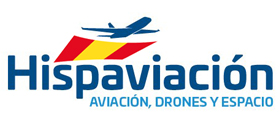 Hispaviación Noticias de Aviación, UAS, Espacio, aviación comercial, Rpas
Hispaviación Noticias de Aviación, UAS, Espacio, aviación comercial, Rpas
